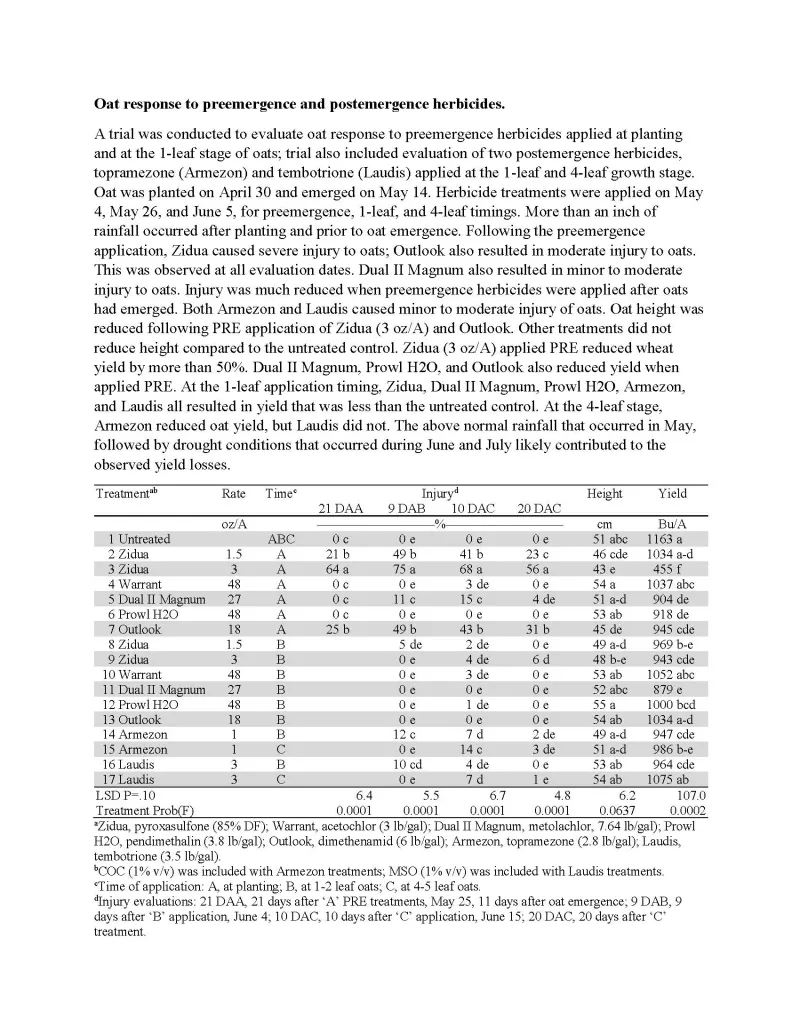A trial was conducted to evaluate oat response to preemergence herbicides applied at planting and at the 1-leaf stage of oats; trial also included evaluation of two postemergence herbicides, topramezone (Armezon) and tembotrione (Laudis) applied at the 1-leaf and 4-leaf growth stage. Oat was planted on April 30 and emerged on May 14. Herbicide treatments were applied on May 4, May 26, and June 5, for preemergence, 1-leaf, and 4-leaf timings. More than an inch of rainfall occurred after planting and prior to oat emergence. Following the preemergence application, Zidua caused severe injury to oats; Outlook also resulted in moderate injury to oats. This was observed at all evaluation dates. Dual II Magnum also resulted in minor to moderate injury to oats. Injury was much reduced when preemergence herbicides were applied after oats had emerged. Both Armezon and Laudis caused minor to moderate injury of oats. Oat height was reduced following PRE application of Zidua (3 oz/A) and Outlook. Other treatments did not reduce height compared to the untreated control. Zidua (3 oz/A) applied PRE reduced wheat yield by more than 50%. Dual II Magnum, Prowl H2O, and Outlook also reduced yield when applied PRE. At the 1-leaf application timing, Zidua, Dual II Magnum, Prowl H2O, Armezon, and Laudis all resulted in yield that was less than the untreated control. At the 4-leaf stage, Armezon reduced oat yield, but Laudis did not. The above normal rainfall that occurred in May, followed by drought conditions that occurred during June and July likely contributed to the observed yield losses.

